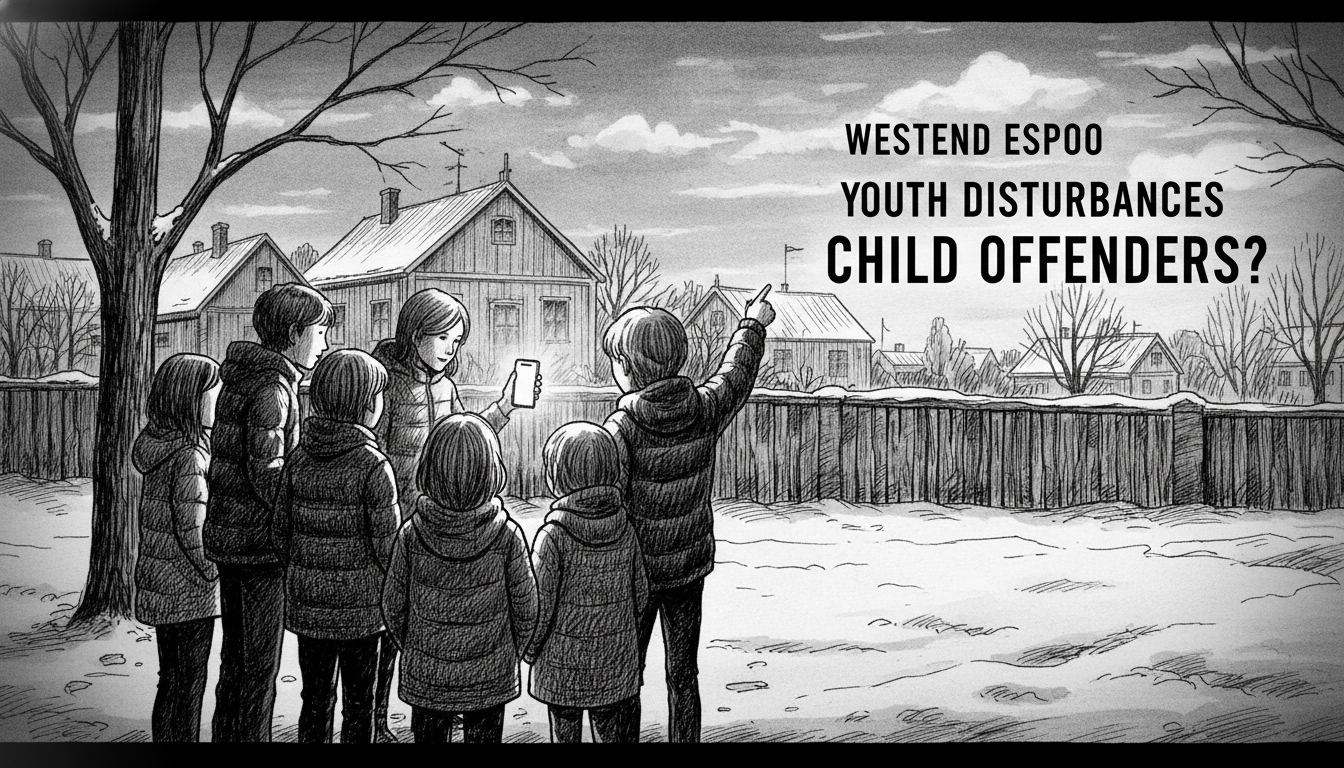Residents in Espoo's affluent Westend neighborhood reported multiple disturbances caused by a youth group during late October. Police confirm the unusual nature of these incidents, noting all suspects are under 15 years old and therefore not criminally responsible under Finnish law.
Lead investigator Hannu Väänänen stated the case presents challenges in determining individual responsibilities within the group. The investigation has identified several potential charges including illegal threats, assault, defamation, attempted robbery, and attempted theft.
Väänänen emphasized this doesn't appear to be organized criminal activity but rather youth behavior that escalated into serious offenses. He noted the troubling pattern of targeting elderly residents, creating genuine risk of serious injury. The children also engaged in behavior that endangered themselves.
Finnish juvenile justice operates differently from many countries. Children under 15 cannot face criminal charges regardless of offense severity. Instead, cases involving young offenders typically involve police discussions and child protection measures. This approach reflects Finland's focus on rehabilitation rather than punishment for young offenders.
The case highlights broader questions about youth crime prevention in Nordic countries. While Finland maintains relatively low youth crime rates overall, affluent suburbs like Westend occasionally experience such incidents. Experts suggest these cases often stem from boredom and lack of supervision rather than socioeconomic factors typically associated with youth crime.
Väänänen expressed concern about social media discussions surrounding the case. He confirmed personal details and potential names have been shared online, creating unnecessary distress for the children and their families. The investigator stressed that anyone with information about potential crimes should contact police directly rather than attempting independent investigations.
Social media commentary often includes inappropriate remarks that cause additional harm, Väänänen noted. He reminded the public that these are very young children who likely didn't fully understand their actions' seriousness or potential consequences.
The situation raises important questions about community responses to youth crime. While understandable that affected residents feel frustrated, public shaming of children through social media rarely produces positive outcomes. Finland's child-first approach aims to address root causes while protecting young people's future prospects.
Local authorities continue working with families and child protection services to address the underlying issues. The case serves as a reminder that even wealthy communities face youth behavior challenges, requiring balanced responses that prioritize both community safety and child welfare.
